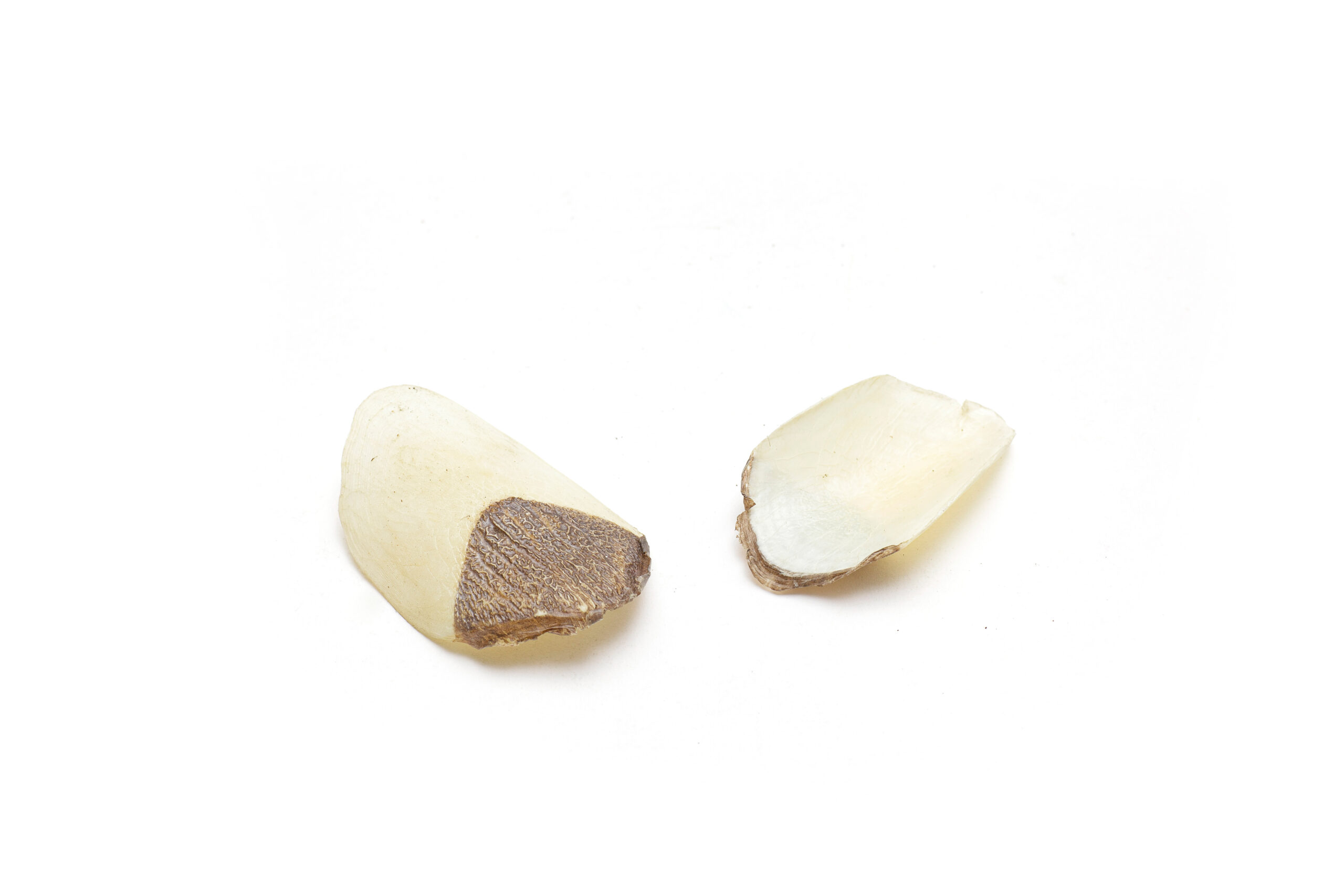MATERIAL: Bone of the Pirarucu fish “tongue” and scales of the fish skin.
TECHNIQUE: Dried in the sun.
USE: The sandpaper texture makes it appropriated as a domestic utensil being used as a grater. The dried scales of Pirarucu are used as a nail -file.
Pirarucu’s Tongue
-
PIRARUCU'S TONGUE
The Pirarucu is a giant fish, one of the most well-known of the Amazon, measuring on average two meters long. Whilst the meat is widely appreciated in many culinary dishes, the dried scales of the fish are used as ‘nail-file’ and for ornamental purposes.
Once dried, the bone of the Pirarucu’s tongue acquires the texture of a rough sandpaper, and measures approximately 20 centimeters in lenght. It is used to grate Guaraná sticks into powder. (Guaraná is an amazonian fruit, and the stick is the oldest form of retaining and trading this product).
In keeping with the tradition of using every part of the Pirarucu, this object also appropriates part of the animal and turns it into a domestic utensil. Given the symbiosis between fish and object, this object is at as much risk of extinction due to excessive and unregulated fishing practices, as the Pirarucu itself.
-
-

The Pirarucu is one of the largest freshwater fishes in Brazil. It can reach up to 3 meters in length and weigh up to 250 kg.
-

The bony-tongue’s “teeth” give the fish extra help when eating.
-

-

Pirarucu’s tongue is a bone rather than a muscle. It measures around 20cm.
-

The object is traditionally used to grate Guaraná sticks and the resulting powder is used to prepare energizing breakfast drinks.
-

The Pirarucu skin is a flexible and extremely solid natural armor capable of withstanding even Piranha bites.
-

The dried scales of Pirarucu are commonly sold as souvenirs and can be used as a nail -file.
-

Most of the techniques used to catch the Pirarucu are based on traditional local fisherman’s skills. This absence of rules can result in the extinction of the fish.
-
-
3D





